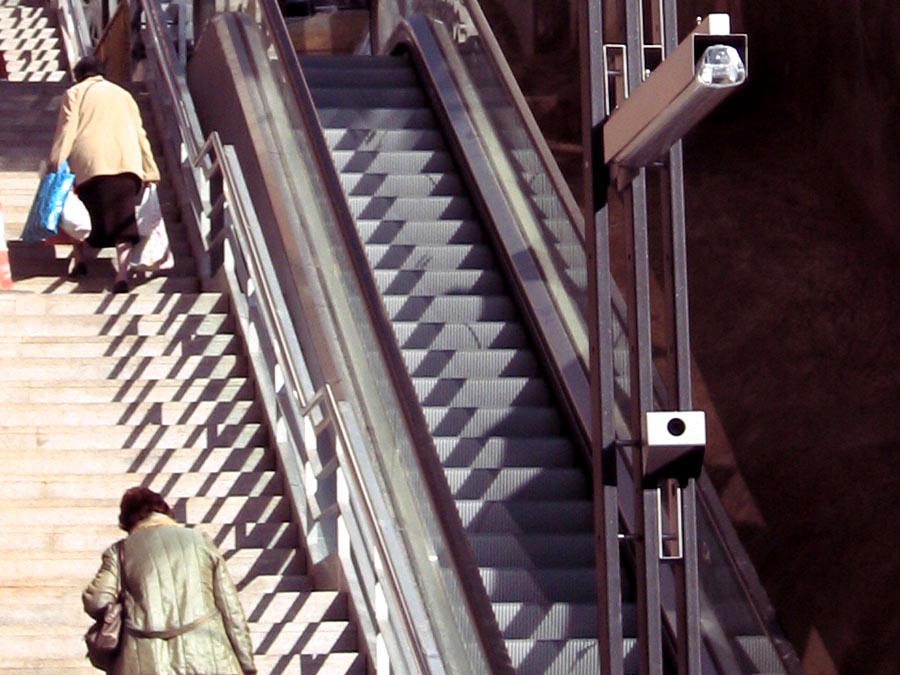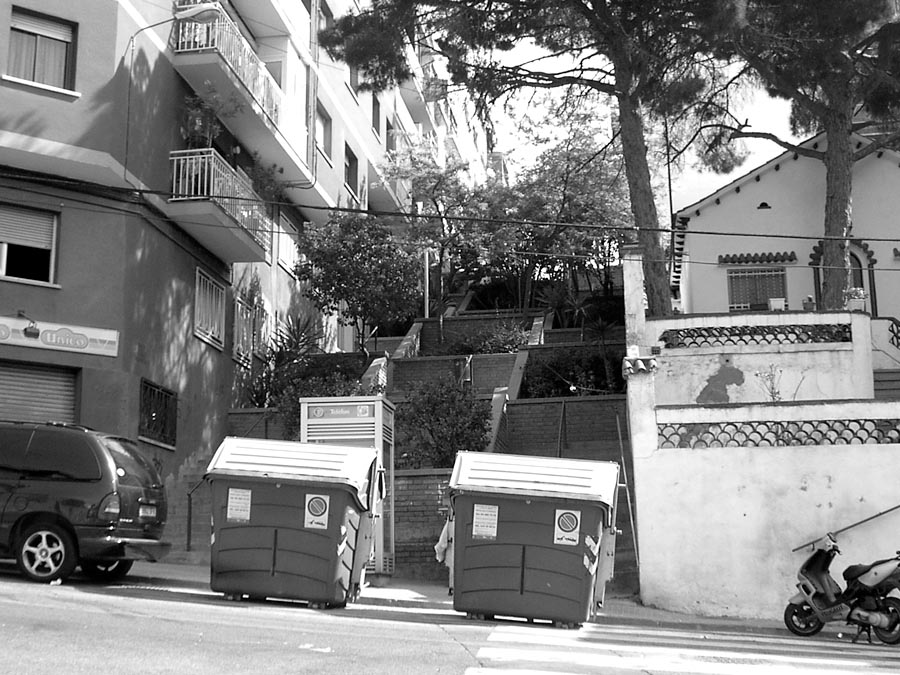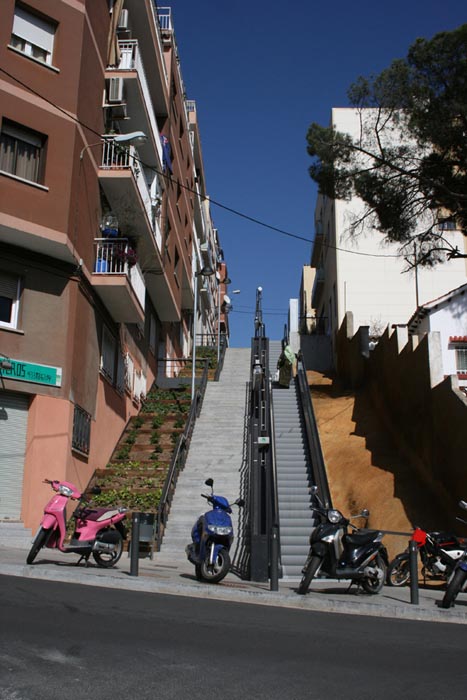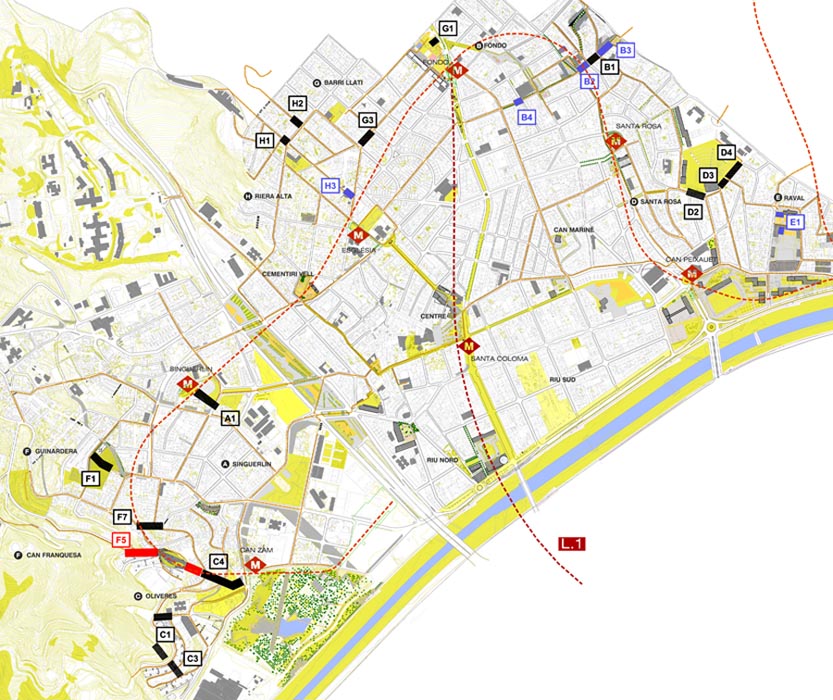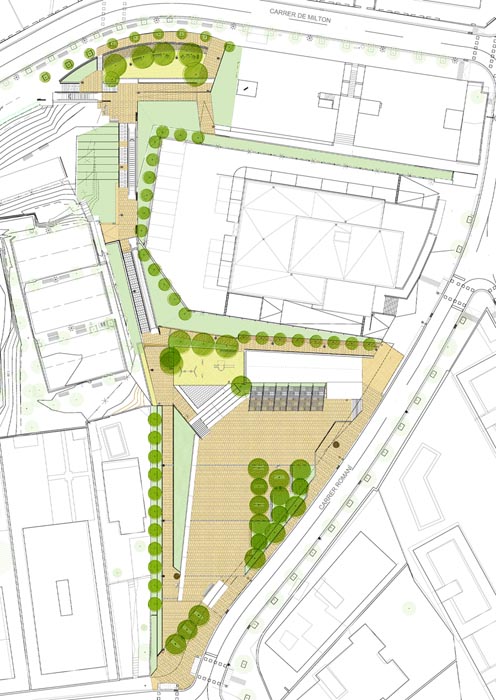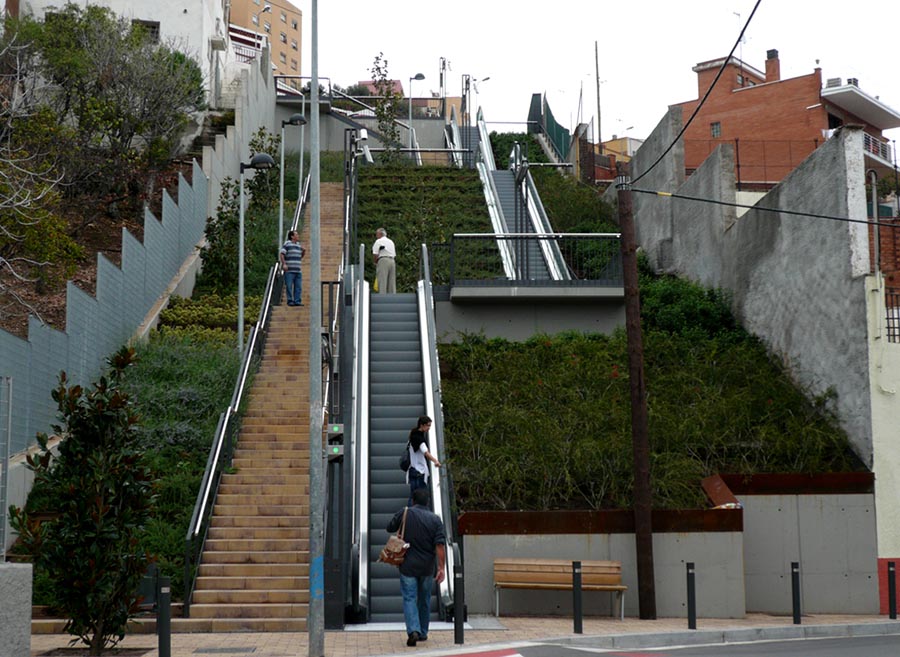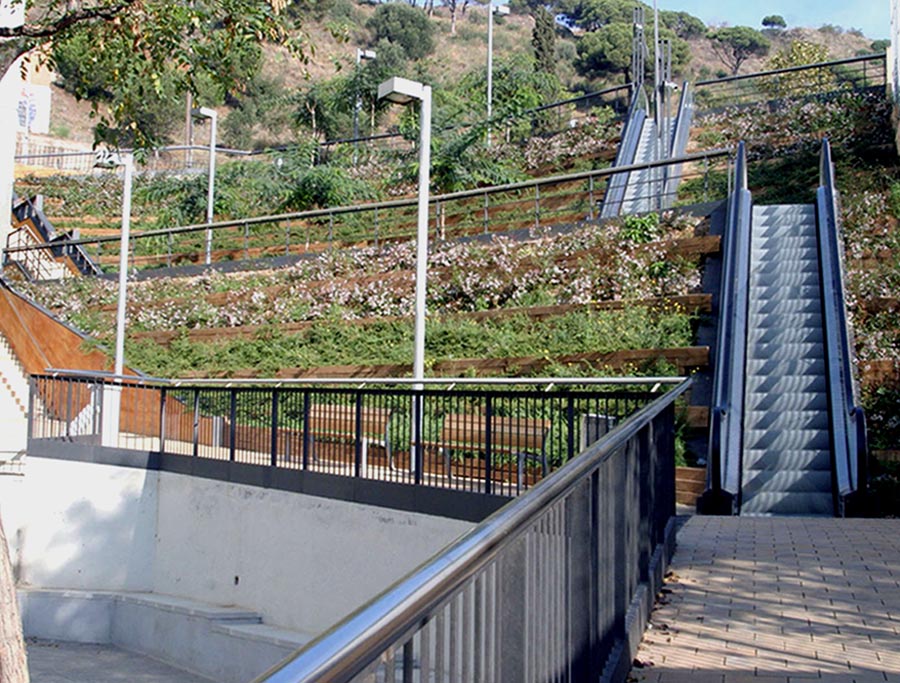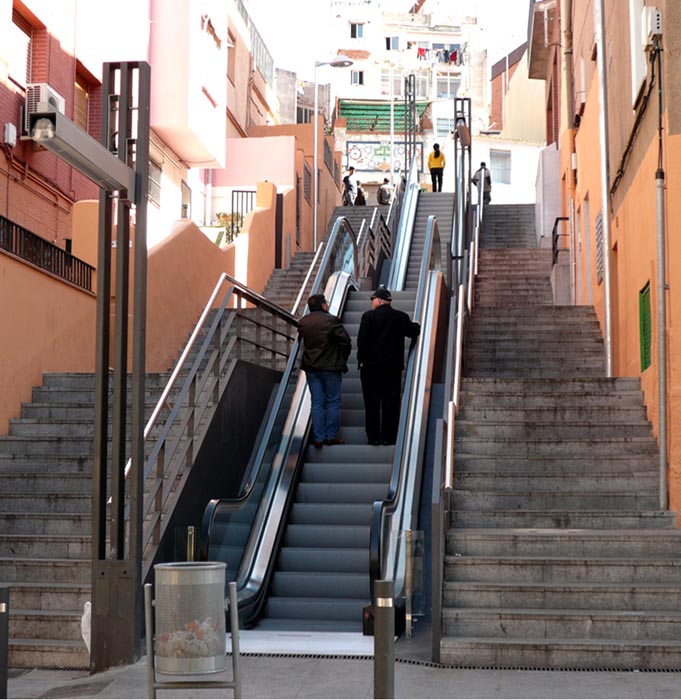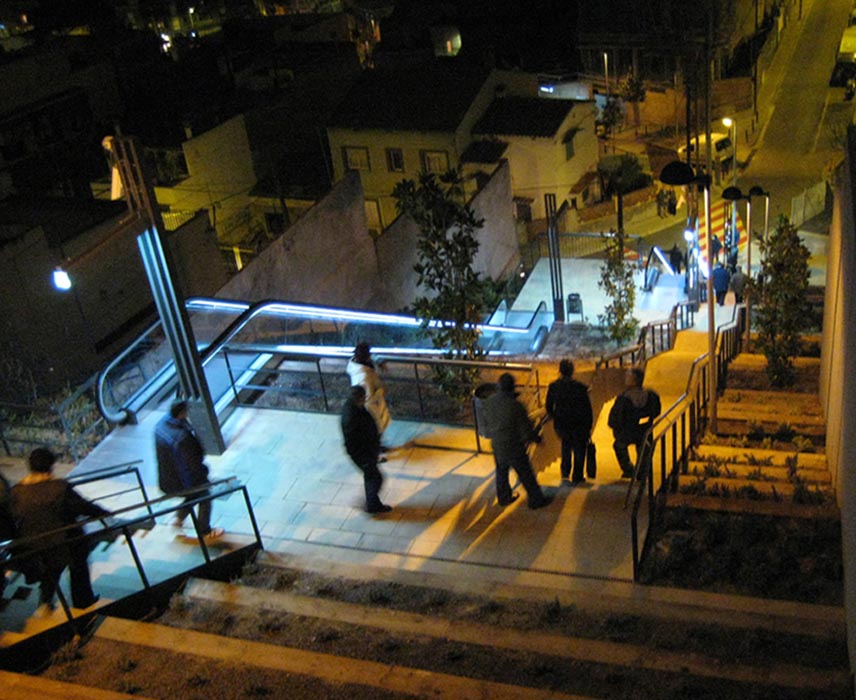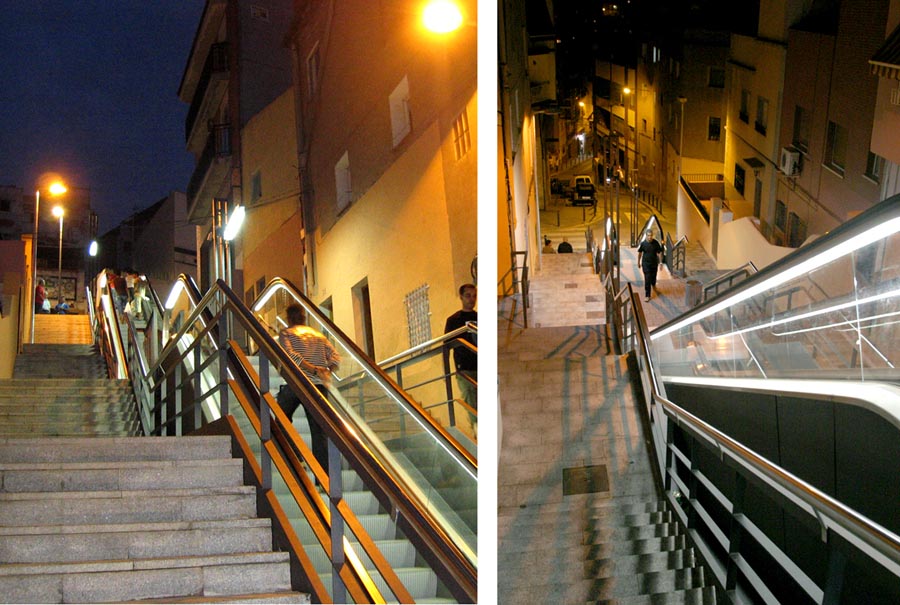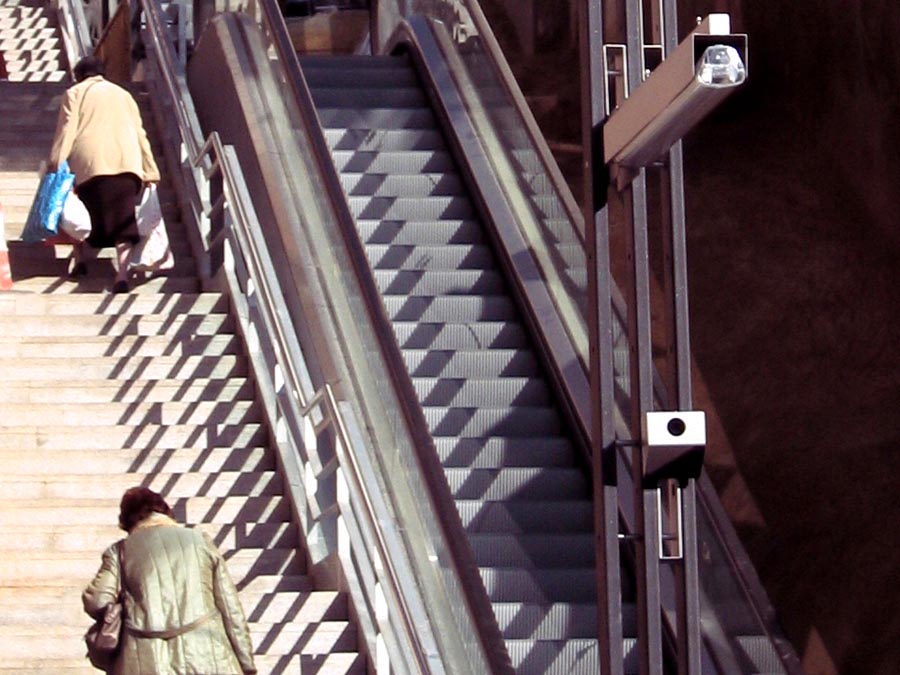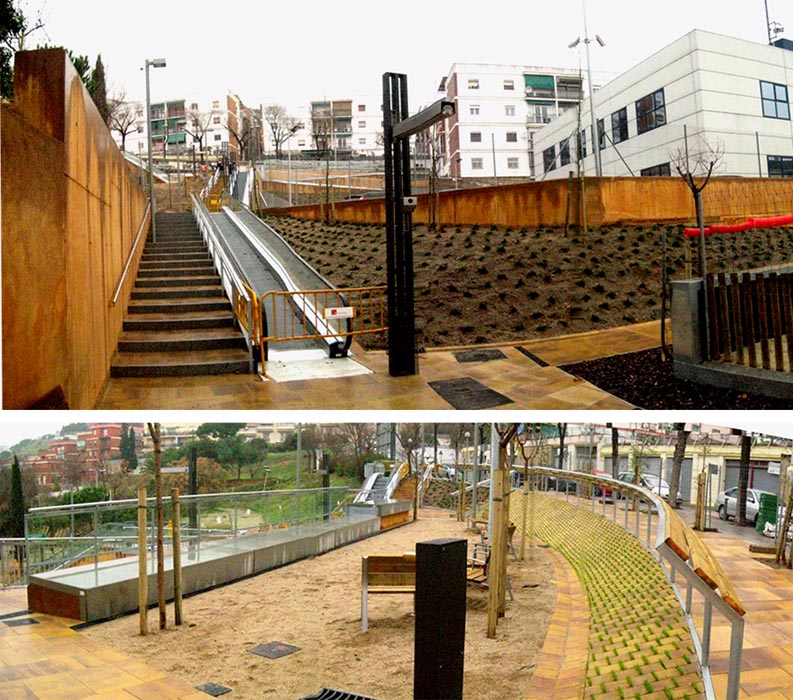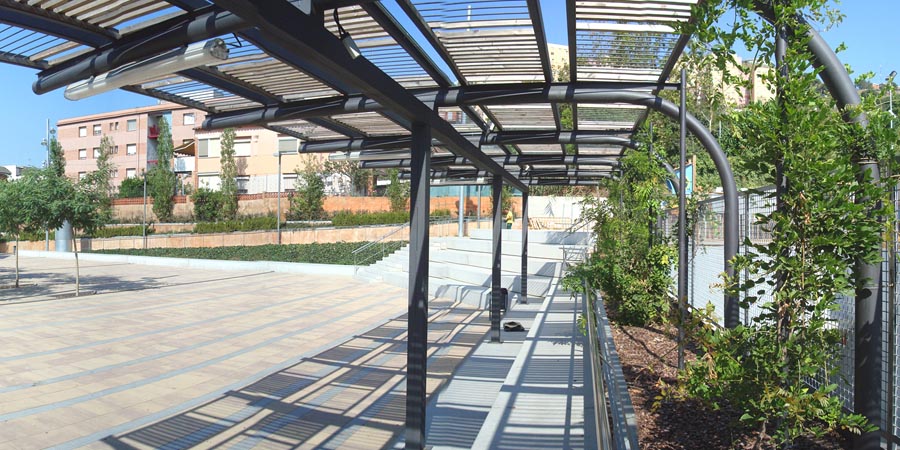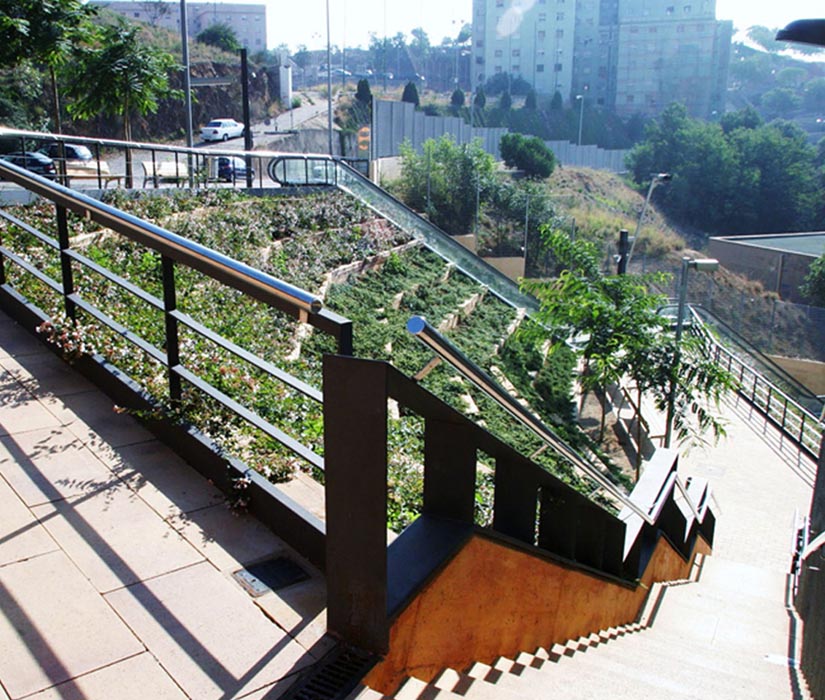Previous state
Until well into the twentieth century, there was no bridge crossing the Besós River to connect Barcelona and the municipality of Santa Coloma de Gramenet. Despite its proximity to the city, this small country town thus kept its bucolic air, which was greatly appreciated by a part of the Barcelona bourgeoisie who built their opulent summer retreats there. After the 1920s, however, many people in the waves of immigrants pouring into to Barcelona, who found work but not accommodation, went to live in Santa Coloma, which sprawled chaotically in all directions, fast becoming a dormitory town. In a period of just fifty years the population soared from just under three thousand to more than a hundred thousand.Under the twin pressures of urgency and speculation, working class neighbourhoods like Singuerin and Can Franquesa soon surrounded the old bourgeois mansions, adopting the names of the families that had once spent their summer holidays in them. Even the steep slopes of the Serralada de la Marina presented no obstacle to the spread of these neighbourhoods, which suffered from serious problems of access and mobility. The urban development policies of the post-Franco democratic period have sought to correct some deficiencies of planning, infrastructure and facilities but the problems deriving from the topography have persisted. Although public transport and the private vehicle provided access to the higher ground, it was still very difficult for pedestrians to move around.
Aim of the intervention
In 2005, the Santa Coloma de Gramenet Council adopted a plan for improving mobility and accessibility for pedestrians. The aim was to improve connections between the main points served by public transport (metro and bus services) and the outlying houses in the most densely populated neighbourhoods.Description
Carried out five years later, the first phase of the project entailed the introduction of almost twenty escalators and four ramps, covering between them differences in level totalling nearly a hundred and thirty metres. The new items of infrastructure have offered a pretext for improving the public spaces where they are installed, along with raising the urban quality of their surrounds in keeping with the particular needs of each case. They have been introduced at ten strategically chosen points with a view to offering continuity for pedestrian movements and bearing in mind both the potential flows of people on foot and the degree of difficulty represented by the slope. These ten points are concentrated in five different districts.One of these neighbourhoods is the sector around the Fondo metro station, a main point of public transport access in Santa Coloma, where two escalators cover a drop of seven and a half metres. The four remaining zones are neighbourhoods notable for their dense population and high location. In Oliveres, four new routes have been opened up, these being served by a ramp and nine escalators that cover a total difference in level of more than fifty metres. In Riera Alta, there are two new routes with four escalators rising almost twenty metres. A pair of escalators in Guinardera offers assistance with a rise of eighteen metres and the three of Can Franquesa cover a total height of about twenty metres. Finally, the Singuerlin neighbourhood has two new ramps that ease a climb of over twelve metres.
Assessment
In Santa Coloma de Gramenet one sees clearly the extent to which, under pressure of urgent need, a town can spread haphazardly, paying no heed to the topography and without waiting for the appropriate infrastructure to be installed. This urgency also ends up exacting its toll in terms of the quality of life of citizens. The installation of the new mechanical access facilities is a hindsight solution that does not fully resolve the structural problems of an urban fabric cobbled together by dizzyingly fast higgledy-piggledy growth. Nevertheless, there can be no doubt that it is a clear contribution towards providing better access facilities and improving the mobility of pedestrians.David Bravo Bordas, architect
[Last update: 02/05/2018]


